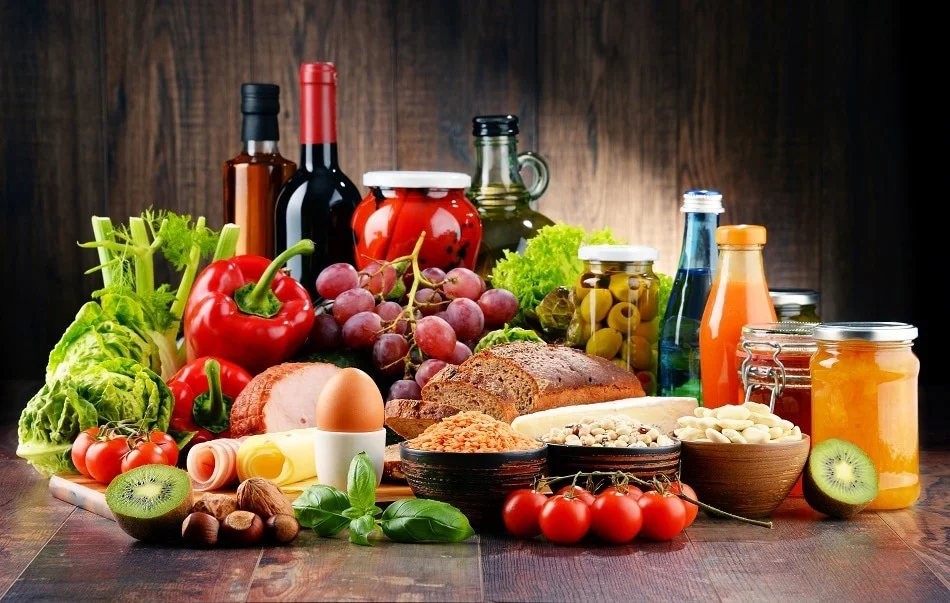The food and beverage sector is vast, varied, and loaded with specialized equipment. Despite being one of the oldest in the world, it continues to be innovative. This business is constantly looking for innovative ways to create the food people desire at the lowest feasible price, from new items to higher-volume, lower-cost production procedures. And all along the route, necessary equipment is available. The food and beverage industries depend on machinery for large-scale food manufacturing, from straightforward conveyor belts and ovens to sophisticated bottling and packaging devices.
In this essay, we give a brief introduction of this crucial sector and examine the special difficulties that its machinery poses for parts like bearings. Finally, we examine how TriStar has applied its knowledge of materials to address technical challenges faced by the food and beverage industry. A potent remedy for a clean, grease-free operation in food processing and packaging plants is the use of advanced polymers and composites.
All businesses engaged in converting unprocessed agricultural products into consumer food products are categorised as belonging to the food and beverage industry. Food processing, packaging, and distribution are all included in the supply chain for the entire industry. It excludes the production of raw foods, which belongs to the closely connected agriculture sector.
This sector covers beverages, packaged foods, and fresh foods (both alcoholic and non-alcoholic). This sector provides goods and services to a wide range of retail outlets, including food sold at supermarkets and prepared meals provided at establishments, institutions, and events.
Some of the processes in Food and Beverage Industry are as follows:
- Turning fresh milk into anything from dehydrated power to a fine cheese.
- Processing whole plants like carrots into diced or cut packaged goods.
- Transforming grain into flour and then a variety of baked goods.
- Butchering pig, cows, chickens, etc. (A single plant, for example, can process 1000’s of cattle in a single day).
- Adding chemical components like preservatives to enhance shelf life and reduce spoilage. Nutrient fortification is another prominent example.
- Using proteins to manufacture the new wave of synthetic meats: a great example of how this industry creates not only new products but whole new product categories.
All of these operations have strict deadlines for packaging and delivery, and it’s frequently required to finish the work and get the food out the door in less than 48 hours after getting the raw ingredients from the farm.
Pain Points in the food and Beverages industry
Some difficulties in the sector are generally shared despite the fact that different food categories demand extremely varied production methods. The food and beverage sector must address several distinctive business problems:
- A supply chain where products can quickly go bad and is time-sensitive. Due to this reality, food businesses must operate on a strict schedule, arrange for specialized storage and transportation, and engage in meticulous inventory management.
- A setting for manufacturing production with particular requirements for cleanliness and secure food handling. This criterion covers a wide range of topics, including thorough equipment cleaning specifications, stringent controls, and potential allergens.
- A tightly controlled sector where production standards must be carefully monitored.
- A propensity for products that are price-sensitive and where every margin counts.
So, what are the solutions for the pain of Food and Beverages industry
For food and beverage firms, improved equipment performance offers actual economic value for both packing and processing equipment. First, in this time-sensitive industry, reliability is crucial because downtime may be quite expensive. Second, efficiency is important in this cut-throat, margin-sensitive sector. For a wide range of food processors, faster, higher-volume machines are crucial. Thirdly, disregarding rules can lead to a loss in output, penalties, or even legal culpability. This industry must take special environmental considerations into account when seeking improved equipment performance. These issues are particularly crucial for major mechanical components like bearings.
- Temperature settings used in food processing might range from a flash freezer to an industrial-sized fryer or oven. Material performance qualities at these temperature extremes need to be carefully considered while choosing materials.
- Extremely potent cleaning chemicals are required due to the increased cleaning standards for food processing and packing equipment. These cleaning agents are so corrosive that they can harm many different types of materials. Materials must be carefully chosen to correspond with the cleaning products that will be applied. Another possibly harmful cleaning procedure is UV treatments. In order to prevent contamination from grease, ensure amenability to caustic cleaning agents, and avoid too porous surfaces where microorganisms might hide, it’s crucial to use the correct materials.
- Grain, beans, and sugar are examples of dry food ingredients that are abrasive on metal and bearing materials. Additionally, the manufacture of many different types of food can produce particulate matter. This “food dust” can easily penetrate exposed machines’ inner workings, resulting in damage and lowering reliability. This issue can be made worse by the sticky grease used in conventional metal bearings, which acts almost like flypaper for impurities.
- All pertinent regulators must authorise the equipment. Some of the most significant are listed here.
Important Regulations for Equipments of Food and Beverages Industry
The Food and Drug Administration (FDA) controls the ingredients, additives, and characteristics of materials used in food contact. The US Department of Agriculture (USDA) oversees food manufacturing, packing, and handling procedures, including those involving meat, poultry, fruits, and vegetables.
The National Sanitation Foundation (NSF) is a private organization that works to improve public health and the environment. An independent organization called 3-A Sanitary Standards is working to advance the design of hygienic equipment for the food, beverage, and pharmaceutical industries.
Future of Food and Beverages Industry
With more than 7.3 million employees, the food and beverage industry is India’s largest employer and makes up about 3% of its GDP. A quarter of all eateries may close by the end of 2020, according to some forecasts, after the statewide shutdown sent this business into a tailspin. According to the National Restaurant Association of India, India’s US$50 billion restaurant business is expected to lose US$9 billion in 2020. (NRAI). Since the lockdown was removed, the industry has been adjusting and inventing to overcome these difficulties and regain profitability. To increase consumer confidence and boost profits, the sector is developing new service offerings and COVID hygiene measures.
Hygiene Standards
The consumer’s concern about safety when ordering and dining in remains even when eateries gradually open their doors for business and operate during limited hours in some areas. The sanitary requirements of restaurants on all major meal delivery platforms are now being mentioned explicitly in order to combat this attitude. Restaurants with high hygiene ratings performed 20% better than those with lower ratings, according to food aggregators. Additionally, India has recently experienced unheard-of growth in the fields of food safety and hygiene. In the food and beverage business, maintaining proper temperatures, routine cleaning, wearing masks, and using safe packaging methods are now considered standards.
Additionally, health and safety audit companies are being used more frequently to uphold standards and foster consumer confidence. These audits are currently not required in India, but the Food Safety and Standards Authority of India (FSSAI) has introduced a 48-point checklist on restaurant hygiene ratings that must be followed. It also has plans to establish stricter hygiene standards and safety auditing protocols in the future.
Contactless Solutions
Self-service kiosks and contactless solutions will be used, all while keeping an eye on security, safety, and health standards. Robotic delivery, digital menus, and in-app ordering are some of the contactless solutions that are popular right now. The hospitality industry is using contactless biometrics and face recognition technology to let customers self-check in and out, unlock rooms, and operate elevators.
The sector has invested in customer-centric technologies amid the pandemic’s slowdown to regain corporate momentum. The industry has prioritised contactless guest engagement to enable automatic conversational interaction between customers and service personnel. The hospitality sector is likely to adopt touchless solutions based on AI and digital payment methods, changing current industry norms for the post-COVID era.
At Home Expereinces
The customer’s willingness to choose in-dining experiences has been significantly impacted by the installation of physical distance measures and the risk of contracting COVID-19. The attendance at restaurants in urban and semi-urban areas remains low despite the adoption of all safety measures with a 50% decreased capacity. To attract consumers, an increasing number of food and beverage firms now provide pre-packaged or carefully designed “At Home” experiences. Since the pandemic, these experiences are becoming into a common service offering within the industry. Previously, this trend was being investigated by a small number of businesses as a specialised product.
It is predicted that a sizable portion of the populace will choose this service even after the epidemic has ended in order to cope with the worry of a subsequent outbreak. The majority of hospitality companies offer private catering services with the choice of ingredient bundles for “cooking at home.” This will satisfy the need of customers wanting for luxurious, home-based culinary experiences.
Gourmet Street Food Brands
Indians are renowned for their love of street cuisine, which offers a huge selection of tastes and flavours at affordable costs. Since the outbreak, however, sanitation has been the main topic of worry, and since the re-opening, street food has rapidly fallen to being among the least popular options for eating out. Even once the epidemic is ended, this trend is expected to continue to have an impact on the sector. Gourmet street food businesses that can meet consumer expectations for flavour, hygienic practises, and ease of delivery are predicted to become more prevalent in the organised parts of the industry.
Vegan and Healthy food brands
2019 saw a significant movement in consumer tastes toward vegan and organic cuisine. Many companies opened their doors in late 2019 and early 2020 with a focus on healthy, farm-to-table vegan food. But when COVID-19 sweeps the globe, many people will undoubtedly adopt this trend as their way of life in the years to come.
Given the increased number of coronavirus cases in the nation, an organic, vegan diet is gaining popularity due to its numerous health and immunity-boosting benefits. As a result, more “vegan only” restaurants and companies pushing plant-based products are anticipated to enter the market. Given that the majority of Indians follow a vegan diet, most consumers are expected to adapt quickly and with relative ease.
What lies ahead for the Food and Beverages Industry
Since the economy has recovered and people have started eating out again, ghost kitchens have also begun to chill off a little. However, given that 60% of customers now order delivery or pickup at least once per week, Technomic forecasts that takeaway will account for 21% of restaurant industry revenues by 2025. Therefore, I will stand with my prediction that the influence of ghost kitchens in 2022 will increase.
The F&B business will continue to experience a frantic acceleration of technological change that will permeate every process and sector. F&B has evolved into the new tech sector thanks to autonomous vehicles, drone deliveries, smart refrigerators, robotics, AI, just walk-out stores, weed-picking robots, Viome to test your gut, and Blockchain! Retailers are transforming alongside brands as a result of technology, too. One retailer undergoing this transformation is KrogerKR -1.7%, which has partnered with tech firm Ocado to create robotic fulfilment centers.
Plant-based and cell-based products are slowly but steadily advancing towards a potential niche market. This is a development of my prior prediction, especially in light of the hybrid products that are currently available, which include plant-based and cell-based components, as well as the significance of ESG to customers. The success of cell-based still depends on consumer education. These items are essential because to environmental issues and the necessity to feed the world in the future.
Despite the old notion that frozen meals were always of low quality and poor health, the industry is still strong and expanding. Frozen foods are not only saturating domestic refrigerators, but also restaurants, where new frozen menu items are being added. Even Martha Stewart came out with a new product. Additionally, Feel Good Foods offers frozen goods that are free of gluten. According to the American Frozen Food Institute, 72 percent of consumers of frozen food combine frozen and fresh ingredients, and Statista notes that sales of frozen pizza in the United States have been increasing steadily, up from $4.98 billion in 2019 to $5.47 billion in 2020 and a projected $6.06 billion in 2021.
Outdoor eating, delivery, and ghost kitchens will continue to be major restaurant trends. Although there are conflicting views on ghost kitchens, Alliance Kitchens has created one with an intriguing twist by mixing various brands. Ghost kitchens help restaurants run more effectively and increase their bottom lines. Labor and food expenses are their main worries. The price of manufactured “kits” will go down.
All other distribution channels will continue to lag behind direct-to-consumer. Even farmers appear to be participating in this process. 73% of customers recently made online grocery purchases. With excellent logistics systems, fewer coupons, and slotting fees, CPG companies can offset higher shipping costs while improving margins and lowering consumer prices. Because it removes layers of cost for the consumer, it’s a win-win situation.
Who loses? Retail sales could suffer if distributors are forced to concentrate more on the food service industry (restaurants, etc.). However, traditional brick-and-mortar retail is becoming better at serving clients online. The pace of stores is accelerating. Retailers increased online sales through curbside and delivery throughout the outbreak.






